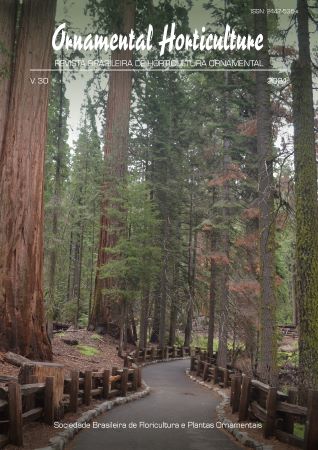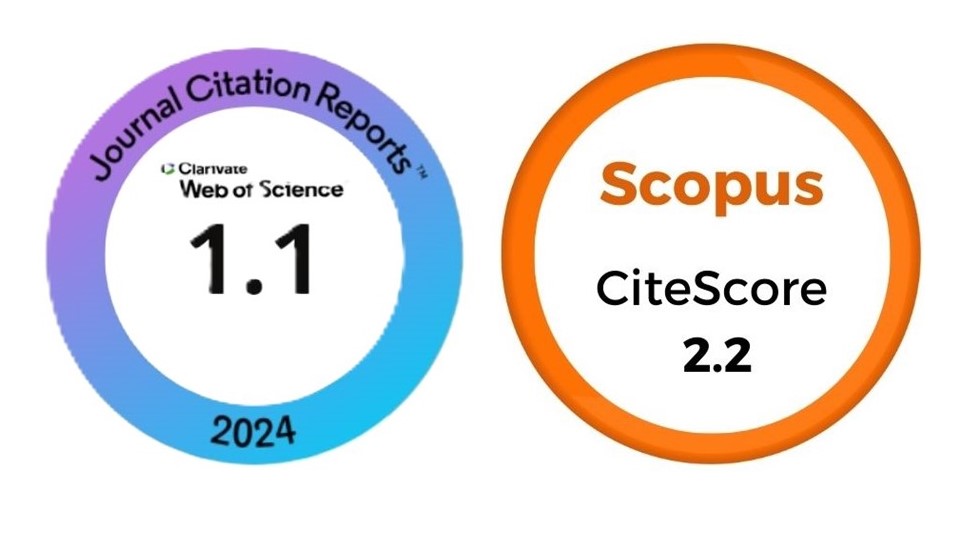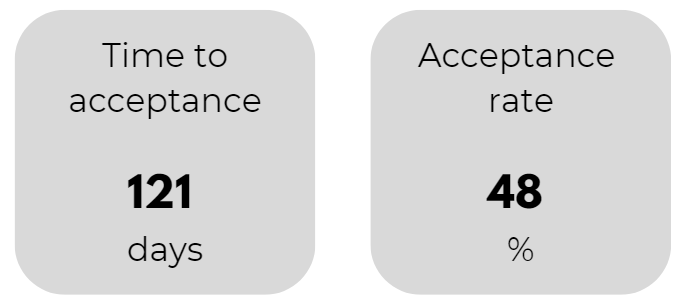Avaliação da diversidade e análise de associação molecular em gladíolos iranianos selvagens
DOI:
https://doi.org/10.1590/2447-536X.v30.e242813Palavras-chave:
fatores geográficos, inflorescência, recurso genéticoResumo
O gladíolo é considerado uma das culturas ornamentais mais significativas do mundo, amplamente utilizado como flor de corte e para paisagismo externo. No entanto, a destruição local do gladíolo iraniano como erva daninha ameaça a biodiversidade desta espécie. Esta pesquisa teve como objetivo comparar populações de gladíolo iraniano. Um total de 76 acessos de gladíolo iraniano foram coletados, exibindo variabilidade fenotípica significativa em todas as características estudadas. Fatores geográficos contribuíram significativamente para essa diversidade. orrelações significativas foram identificadas entre comprimento do caule e latitude (r = 0,746, P < 0,01). O número de floretes mostrou uma forte correlação com comprimento e longitude da espiga (r = 0,777, P < 0,01 e r = 0,658, P < 0,05, respectivamente). A população Hmdn8 da província de Hamedan exibiu valores superiores em todas as características fenotípicas. Além disso, a população Krdstn4 da província do Curdistão, conhecida por suas características superiores de inflorescência, foi identificada como adequada para propósitos específicos de reprodução. As condições climáticas do Curdistão, caracterizadas por um clima frio semi-úmido e alta precipitação anual, indicam que latitudes mais altas e períodos mais frios são favoráveis ao crescimento e floração do gladíolo. Um total de 146 bandas polimórficas foram produzidas a partir de dois tipos de marcadores, ISSR e IRAP. A análise de associação revelou que os marcadores ISSR4-3, ISSR2-20 e ISSR5-24 mostraram correlações significativas com o comprimento do caule e o número de floretes. Essas descobertas são cruciais para identificar regiões genômicas importantes para programas de reprodução do gladíolo.
Downloads
Referências
AZIMI, M.H. Assessment and ranking of new Gladiolus hybrids in Iran. Journal of Horticulture and Postharvest Research, v.3, n.2, p.235-244, 2020. https://doi.org/10.22077/jhpr.2020.2972.1112
AZIZ, S.; FIRDOUS, S.; RAHMAN, H.; AWAN, S.; MICHAEL, V.; MERU, G. Genetic diversity among wild pomegranate (Punica granatum) in Azad Jammu and Kashmir region of Pakistan. Electronic Journal of Biotechnology, v.46, p.50-54, 2020. https://doi.org/10.1016/j. ejbt.2020.06.002
BRADBURY, P.J.; ZHANG, Z.; KROON, D.E.; CASSTEVENS, T.M.; RAMDOSS, Y.; BUCKLER, E.S. TASSEL: Software for association mapping of complex traits in diverse samples. Bioinformatics, v.23, n.19, p.2633-2635, 2007. https://doi.org/10.1093/bioinformatics/btm308
CANTOR, M.; TOLETY, J. Gladiolus. In: KOLE, C. (eds) Wild Crop Relatives: Genomic and Breeding Resources. Berlin, Heidelberg: Springer, 2011.
CHAUDHARY, V.; KUMAR, M.; SHARMA, S.; KUMAR, N.; KUMAR, V.; YADAV, H.K.; SHARMA, S.; SIROHI, U. Assessment of genetic diversity and population structure in Gladiolus (Gladiolus hybridus Hort.) by ISSR markers. Physiology and Molecular Biology of Plants, v.24, p.493-501, 2018. https://doi.org/10.1007/s12298-018-0519-2
EBRAHIMI, A.; ASADI, A.; MONFARED, S.R.; SAHEBI, M., REZAEE, S.; KHALEDIAN, Y. Evaluation of phenotypic diversity of the endangered orchid (Orchis mascula): Emphasizing on breeding, conservation and development. South African Journal of Botany, v.132, p.304-315. 2020. https://doi.org/10.1016/j.sajb.2020.05.013
ECHEVERRÍA, M.L.; CAMADRO, E.L. Morphological and molecular variability of wild diploid and polyploid populations of Chrysolaena flexuosa (Sims) H. Rob.: relevance for ornamental breeding. Scientia Horticulturae, v.260, p.108875, 2020. https://doi.org/10.1016/j. scienta.2019.108875
GABRIELIAN, E. The genus Gladiolus (Iridaceae) in southern Transcaucasia. Bocconea, v.13, p.445-455, 2001.
GANGWAR, H.; GAHLAUT, V.; CHAUHAN, R.; SINGH, S.; JAISWAL, V. Development of species-specific ISSR-derived SCAR marker for early discrimination between Cinnamomum verum and Cinnamomum cassia. Molecular Biology Reports, v.50, n.8, p.6311-6321, 2023. https://doi.org/10.1007/s11033-023-08578-z
GHAHRAMAN, A. Colorful Flora of Iran. Tehran: The Research Institute of Forest and Pastures, 1979.
HASAN, N.; CHOUDHARY, S.; NAAZ, N.; SHARMA, N.; LASKAR, R.A. Recent advancements in molecular marker-assisted selection and applications in plant breeding programmes. Journal of Genetic Engineering and Biotechnology, v.19, n.1, p.128. 2021, https://doi.org/10.1186/s43141-021-00231-1
KAMAL MEENA, V.; VARDHAN SINGH SHEKHAWAT, H.; CHAND, S.; CHOUDHARY, K.; KUMAR SHARMA, J.; LEKHA, L. Advances in Molecular Marker Technology and their Significance in Plant Improvement Strategies. Hong Kong: IntechOpen, 2023.
KAUR, V.; ARAVIND, J.; MANJU, JACOB, S.R.; KUMARI, J.; PANWAR, B.S.; PAL, N.; RANA, J.C.; PANDEY, A.; KUMAR, A. Phenotypic characterization, genetic diversity assessment in 6,778 accessions of barley (Hordeum vulgare L. ssp. vulgare) germplasm conserved in National Genebank of India and development of a core set. Frontiers in Plant Science, v.13, p.771920, 2022. https://doi.org/10.3389/fpls.2022.771920
KHADIVI, A.; MIRHEIDARI, F.; MORADI, Y.; PARYAN, S. Phenotypic and fruit characterizations of Prunus divaricata Ledeb. germplasm from the north of Iran. Scientia Horticulturae, v.261, p.109033, 2020. https://doi.org/10.1016/j.scienta.2019.109033
KUMAR, K.; ANJOY, P.; SAHU, S.; DURGESH, K.; DAS, A.; TRIBHUVAN, K.U.; SEVANTHI, A.M.; JOSHI, R.; JAIN, P.K.; SINGH, N.K.; RAO, A.R.; GAIKWAD, K. Single trait versus principal component-based association analysis for flowering related traits in pigeonpea. Scientific Reports, v.12, n.1, p.10453, 2022. https://doi.org/10.1038/s41598-022-14568-1
LAZARIDI, E.; KAPAZOGLOU, A.; GERAKARI, M.; KLEFTOGIANNI, K.; PASSA, K.; SARRI, E.; PAPASOTIROPOULOS, V.; TANI, E.; BEBELI, P.J. Crop landraces and indigenous varieties: A valuable source of genes for plant breeding. Plants, v.13, n.6, p.758, 2024. https://doi.org/10.3390/plants13060758
PRISM, G. Release 8.0 Version. Graph Pad software. San Diego, CA, USA. 2018.
PRITCHARD, J.K.; STEPHENS, M.; DONNELLY, P. Inference of population structure using multilocus genotype data. Genetics, v.155, n.2, p.945-959, 2000. https://doi.org/10.1093/genetics/155.2.945
RAMOS, S.N.; SALAZAR, M.M.; PEREIRA, G.A.; EFRAIM, P. Plant and metagenomic DNA extraction of mucilaginous seeds. MethodsX, v.1, p.225-228, 2014. https://doi.org/10.1016/j.mex.2014.09.005
RAŽNÁ, K.; KUČKA, M.; HARENČÁR, Ľ.; MAJTÁN, M. Genetic diversity of selected Gladiolus (Gladiolus× Gandavensis Van Houtte) cultivars assessed by microrna-based markers. Agrobiodiversity for Improving Nutrition, Health and Life Quality, v.6, n.1, 2022. https://doi.org/10.15414/ainhlq.2022.0010
SAS Institute Inc. SAS/STAT. User’s Guide, Version 9. Cary, NC: SAS Institute Inc., 2003.
SINGH, N.; PAL, A.K.; MEENA, B.; ROY, R.K.; TAMTA, S.; RANA, T.S. Development of ISSR-and RAPD-derived SCAR markers for identification of Gladiolus germplasm. The Journal of Horticultural Science and Biotechnology, v.92, n.6, p.577-582, 2017. https://doi.org/ 10.1080/14620316.2017.1309995
SINGH, N.; PAL, A.K.; ROY, R.K; TEWARI, S.K.; TAMTA, S.; RANA, T.S. Characterization of gladiolus germplasm using morphological, physiological, and molecular markers. Biochemical Genetics, v.56, p.128-148, 2018. https://doi.org/10.1007/s10528-017-9835-4
TYAGI, A.; MIR, Z.A.; ALMALKI, M.A.; DESHMUKH, R.; ALI, S. Genomics-assisted breeding: a powerful breeding approach for improving plant growth and stress resilience. Agronomy, v.14, n.6, p.1128, 2024. https://doi.org/10.3390/agronomy14061128
WEN, S.; ZHAO, H.; ZHANG, M.; QIAO, G.; SHEN, X. IRAPs in combination with highly informative ISSRs confer effective potentials for genetic diversity and fidelity assessment in Rhododendron. International Journal of Molecular Sciences, v.24, n.8, p.6902. 2023. https://doi.org/10.3390/ijms24086902
YALI, W.; MITIKU, T. Gene pool, classification and its importance in modern crop improvement program. International Journal of Agricultural Science and Food Technology, v.10, n.2, p.068-073, 2024. https://dx.doi.org/10.17352/2455-815X.000209
ZHANG, Z.; ERSOZ, E.; LAI, C.; TODHUNTER, R.J.; TIWARI, H.K.; GORE, M.A.; BRADBURY, P.J.; YU, J.; ARNETT, D.K.; ORDOVAS, J.M.; BUCKLER, E.S. 2010. Mixed linear model approach adapted for genome-wide association studies. Nature Genetics, v.42, n.4, p.355-360. 2010. https://doi.org/10.1038/ng.546
ZHAO, K.; ARANZANA, M.J.; KIM, S.; LISTER, C.; SHINDO, C.; TANG, C.; TOOMAJIAN, C.; ZHENG, H.; DEAN, C.; MARJORAM, P.; NORDBORG, M. An Arabidopsis example of association mapping in structured samples. PLoS Genetics. v.3, e4. 2007. https://doi.org/10.1371/journal.pgen.0030004
ZHOU, C.; WU, H.; SHENG, Q.; CAO, F.; ZHU, Z. Study on the phenotypic diversity of 33 Ornamental Xanthoceras sorbifolium Cultivars. Plants, v.12, n.13, p.2448. 2023. https://doi.org/10.3390/plants12132448
Downloads
Publicado
Edição
Seção
Licença
Copyright (c) 2024 Ornamental Horticulture

Este trabalho está licenciado sob uma licença Creative Commons Attribution 4.0 International License.








